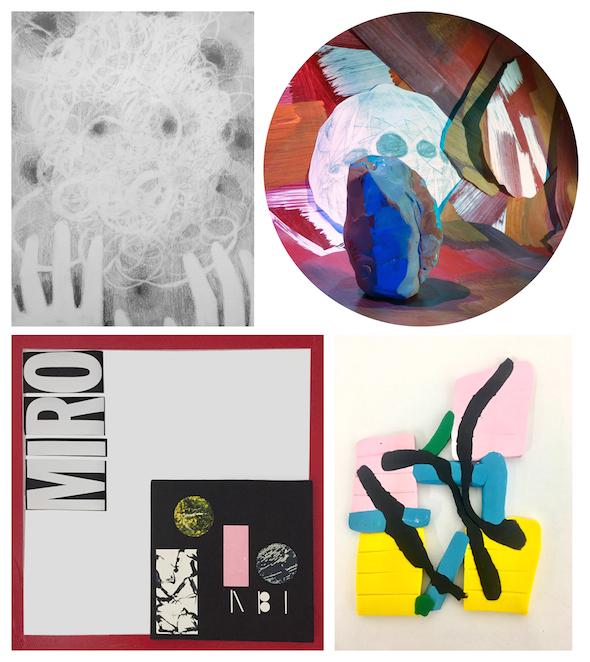Points of Entry
Points of Entry
SCOTTY presents Points of Entry, an exhibition featuring works by members of Tiger Strikes Asteroid New York (TSA NY), an artist-run gallery in Bushwick, Brooklyn. This is the second part of a twopart exchange between SCOTTY and TSA NY. The first, Dissolution, occurred at TSA’s Brooklyn space as part of Exchange Rates Art Expo in October 2016 and featured works by members of SCOTTY.
The phrase “point of entry” often refers to breaks along a national border through which goods
and people may cross. It can also describe a how an artwork is relatable to a viewer, allowing
them entrance to the logic of a piece and a way to connect to it. This exhibition uses the term
for both references with a dualist intention.
A point of entry may be clearly defined, such as a checkpoint or an airport screening area, with
a requisite set of formalities one undergoes; or it may be vague and less organized, as those on
small country roads. The experience can be similar when engaging an artwork. One piece may have
a clear premise or critique while a neighboring piece presents an entire set of abstruse signifiers
that baffles the viewer. A set of expectations can be undermined as the terms shift and change
from station to station.
With Britain and the European Union divorcing in Brexit, reactionary populists like the Le Pen and
Wilders campaigns to close borders, and the twice-blocked travel ban in the United States under
the Trump administration, points of entries in Europe and the US are in a state of flux. Who, how
and what they filter is changing, as is as their significance for those within and outside the border.
Points of Entry presents works that deal with borders and breaks using a range of approaches.
In Vincent Como‘s „Army of Darkness“ series the repetition of small works cause them to act as
soldiers, or sentries, creating a uniform and unified front. Their modesty of materials (cardboard,
tape, ink) becomes an homage to the lo-fi camp of cult films like their namesake, while entering
an uncanny valley with regard to their accessibility as „paintings“; becoming both familiar and not,
friend and foe.
Bill Crump’s recent work pays homage to personally relevant art historical influences, in this case
Joan Miro, by using their names as a point of entry to merge disparate ideas and media he has
worked with over the years. Rather than referencing Miro’s work, he is using his name as a formal
device on which to hang artistic concerns.
Rachael Gorchov’s photographs present mixed media environments of colored light, paintings on
paper, drawings, and modeling clay. In these these layered and moody spaces pictorial depth shifts
ambiguously. Gorchov has mined images of European synagogues for the drawings as a means of
understanding a personally relevant visually language to which she’s largely ignorant. The tondo
format, a western art historical trope merges her artist and cultural historical heritages.
One enters Jackie Hoving’s drawings through swirling marks and erased edges. These atmospheric
abstractions become boundaries between viewer and subject, literally masking and erasing a portrait
of an individual. By visually navigating through this image-fog, viewers may perceive a spectral
subject returning their gaze.
Alex Paik begins his works with a single unit that is then repeated in different configurations
to generate a cohesive piece. Having a background as a classical musician, Paik approaches and
develops his visual works as he might a piece of music: units layer and form additional compound
shapes, mimicking how a fugue’s subject is transposed, inverted, and folded into itself.
Norm Paris’s Erased Cards present sports trading cards - bygone, mass-produced, American objects,
where the figure has been redacted. Divisions between athletes - famous and middling disappear.
The collectability value of the cards are equalized. Heroic presences become ordinary.
Matt Phillips’s paintings begin with a grid, but after having been completed over long periods of
time and through successive layers, the geography of the initial grid always breaks at some point.
Geometric elements are gleefully undermined. Spontaneity, revolt, defiance, and humor become the
only way forward.
Andrew Prayzner’s recent series of paintings explore the polemical language of sloganeering in the
quasi-public realms of car bumper stickers and social media. Political discussion has become so
polarized that it is now believed that if one holds a position that it is assumed that the person
represents a whole set of particular values. For example, if one supports Black Lives Matter, it
is automatically assumed that the person is anti-police. The loss of sober discussion, of nuanced
perspectives, and the demonizing of those who do not share their own worldview, has contributed
to a rise in populist outrage that has the potential to undermine the democratic process.
Naomi Reis uses craft-based materials (painted paper, thread, fabric) intuitively to disobey formal
ideas of Western painting. Photographic imagery of landscapes are printed on fabric and the surface
disrupted via bleaching, abrasions, and pierced by needle and thread.
Sun You gathers a mix of commonplace craft materials such as clay, costume jewelry and filigreed
wood to create colorful abstract designs that hover between fine art and craft in a celebration of
color, ornament and gesture. Her recent floor installations arrange polymer clay in loose groupings
reminiscent of retail displays or banquet tables, blurring boundaries between art, domesticity,
consumability, and the function of objects.












